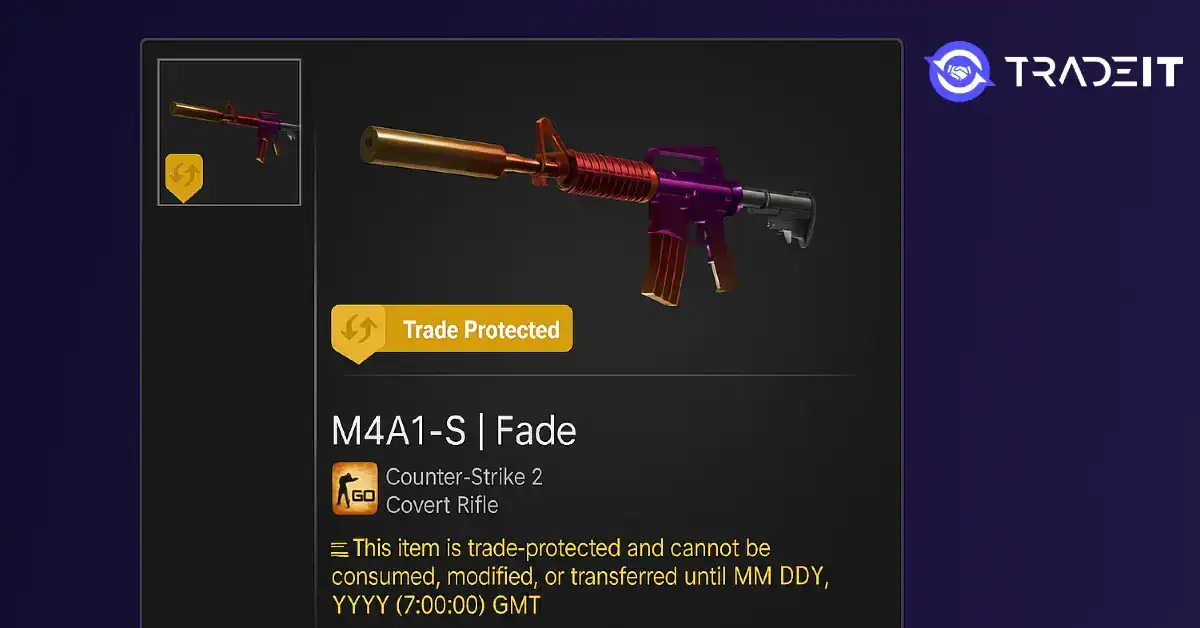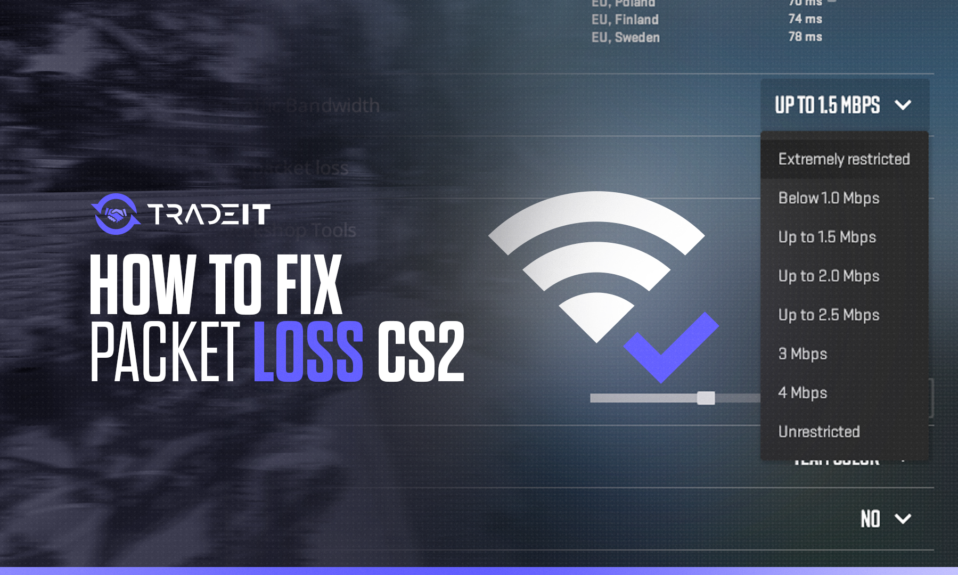
On July 16, Valve released a new CS2 update that introduced several important changes. One of them is related to skin trading. This concise guide provides all the information you need to know.
Table of Contents
- What is Steam Trade Protection?
- How Trade Protection Secures Your Items After an Account Compromise
- Which Games and Items Are Currently Trade Protected?
- How to Reverse a CS2 Trade Using Trade Protection: A Step-by-Step Guide
- The Consequences of Reversing a Trade: Cooldowns and Restrictions
- A Critique of Valve’s New Item Protection Feature
- Conclusion
- FAQs
What is Steam Trade Protection?

Steam Trade Protection is a security feature introduced by Valve that places a temporary seven-day trade lock on items you receive through trading.
While you can immediately use these items in-game, you can’t re-trade, sell, or transfer them for seven days. This period acts as a safeguard, giving Valve a window to reverse unauthorized transactions in case your account is compromised.
The goal is to balance freedom and security: players can enjoy their new skins right away, but malicious actors are prevented from instantly laundering stolen items. It’s a proactive layer of defense against inventory theft.
How Trade Protection Secures Your Items After an Account Compromise

Trade Protection is designed to stop the damage caused by phishing scams, malware, or hijacked accounts. In the past, once an attacker gained access to an account, they could instantly transfer valuable skins to another account and vanish.
Now, with the seven-day trade lock, those stolen items become temporarily immovable, giving Valve time to detect suspicious activity and roll back trades.
Even if your account is compromised, your items are no longer easy targets for quick theft. This significantly reduces the incentive and success rate of fraudsters trying to exploit unsuspecting CS2 and Steam users.
Which Games and Items Are Currently Trade Protected?

At the moment, only CS2 items are subject to trade-protection rules. However, Valve has announced that they plan to implement similar rules for other games too, such as Team Fortress 2 and Dota 2.
How to Reverse a CS2 Trade Using Trade Protection: A Step-by-Step Guide

If your Steam account has been compromised and you suspect unauthorized trades, Valve’s Trade Protection system gives you a chance to recover your CS2 items.
The process is designed to be user-friendly but must follow specific steps. Below is a clear, step-by-step guide on how to reverse trades made without your consent. It’s important to act quickly, as reversals are only possible within the 7-day protection window.
Step 1: Secure Your Steam Account
Before attempting to reverse any trades, you must first secure your Steam account. This is necessary only if your account has been compromised by a hacker.
Go to Steam Support and select “My Account was stolen and I need help recovering it.” Follow the instructions to reset your password, remove unauthorized access, and enable Steam Guard Mobile Authenticator if it was disabled.
Valve will not allow any trade reversals until full control of your account has been restored. This is to ensure that you—not an attacker—are making the request.
Step 2: Navigate to Your Trade History
Once your account is secured, log in to Steam via the desktop client or web browser. Click on your username in the top menu, select “Inventory”, and then click “Trade Offers”.
From there, select “View Trade History”. You’ll now see a list of all trades made with your account. Any trades eligible for reversal will be clearly marked.
These are trades made within the seven-day Trade Protection window and will show a “Reverse This Trade” option if available.
Step 3: Initiate the Reversal Process
Click the “Reverse This Trade” button on any eligible trade. Steam will prompt you to confirm the reversal.
Important: this action will reverse all eligible trades made during the compromise period, not just the one you selected.
This ensures the integrity of your item history and avoids partial or manipulated rollbacks. Once confirmed, the items will be returned to your inventory and removed from the accounts they were transferred to. Valve may also notify affected users of the reversal.
The Consequences of Reversing a Trade: Cooldowns and Restrictions

Valve’s item protection feature assumes that your account has been hacked. If you use it to cancel all trades performed in the last 7 days (and performed no sooner than July 16, of course), you will no longer be able to trade for 30 days.
Another thing to keep in mind is that trades cannot contain items from both protected and non-protected inventories. At the moment, the new feature is only for CS2 skins. This means that you can’t combine CS2 skins with TF2 skins for a trade.
A Critique of Valve’s New Item Protection Feature

Over the years, Valve has introduced new rules to make skin trading more reliable and prevent scams as much as possible. On July 16, 2025, an additional feature was released with this purpose in mind.
However, there’s currently a lot of controversy surrounding it because the rules aren’t yet clear. Many in the CS2 community believe that Steam’s latest item protection feature risks creating more problems than it solves.
For example, some of the trades between players are performed like real-life transactions. In other words, if you want to buy one of my CS2 skins, you pay for it, I offer it to you in a trade, and the transaction ends there.
But now that all trades can be reversed for up to 7 days after they’re made, while money transactions obviously won’t, Valve’s feature may actually facilitate scams instead of preventing them.
In the case of a scam, the ability to reverse all recent trades is useful. But the problem is that it creates the option of canceling a trade that was made in part with money using an external payment method.
Conclusion
Time will tell if Valve’s new feature was a good idea. Based on initial observations, it may have to be removed from Steam in the coming weeks. One thing is certain: either skin traders don’t understand Valve’s new feature, or Valve themselves have made a mistake.
The ability to revert trades after they have gone through seems rather dangerous and may not work as intended.



